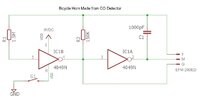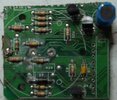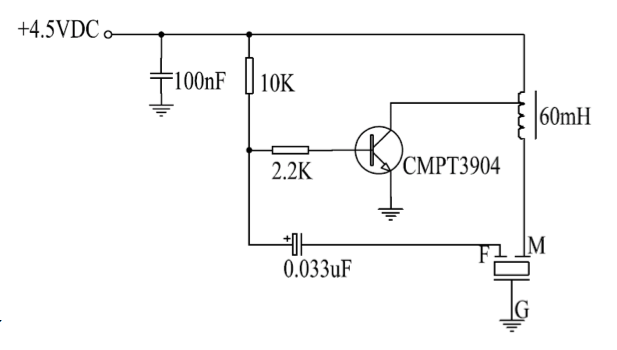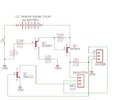Hello, I hope everyone is well.
I created a bicycle horn from a CO detector simply because the buzzer is
extremely loud and can be heard from a long distance.
When I use the (modified) CO detector board the buzzer is very loud.
I created my own circuit from a schematic I found on the net,
however the buzzer is not as loud as it was on the original board.
I have included my circuit below.
Any advice as to how I can increase the volume on the buzzer?
For the R1 resistor, I used 1M instead of 1.5M because that is all I had here.
Any advice is greatly appreciated.
I created a bicycle horn from a CO detector simply because the buzzer is
extremely loud and can be heard from a long distance.
When I use the (modified) CO detector board the buzzer is very loud.
I created my own circuit from a schematic I found on the net,
however the buzzer is not as loud as it was on the original board.
I have included my circuit below.
Any advice as to how I can increase the volume on the buzzer?
For the R1 resistor, I used 1M instead of 1.5M because that is all I had here.
Any advice is greatly appreciated.
Attachments
Last edited:




